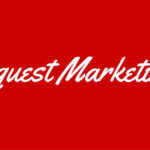
Guest post by Albert Martin, Sound Designer at Strong
Creating an identity for your business through music used to mean only one thing: Go spend a ton of money on producing a jingle. That’s a huge challenge with a potentially huge downside. If you don’t nail it, and I mean exactly right, you miss out on the positive emotional connection a well-crafted jingle is supposed to create.
Some have enjoyed great success with theirs, but for the most part jingles are seen as old-school. Like the parachute pants I wore in 9th grade, there’s little hope that a retro-resurgence will make them popular again. “That is so 1983, man!”
The modern world’s ever shrinking attention span has replaced the traditional jingle with a far more expressive concept: “Sonic Branding.” You know exactly what sonic branding is, though you might not have known its proper name:
http://www.youtube.com/watch?v=QRLyMjvug1M
http://www.youtube.com/watch?v=eBlD2N_AwgI
Sonic branding at this level costs an enormous amount of money, but the principles behind what makes it so effective can be applied to any advertising strategy. Here are three practical applications from my work as sound designer at Strong.
- Connectivity – There are certain clients – usually high-line dealers – where we want to create a long-term impression with viewers. For those situations, I carefully select a track of music that captures the essence of the dealership and use it exclusively for at least 7 months. Invariably, at the end of that time, I hear stories from the client where people are telling him “Wow, you’ve really been advertising more!” Truth is, they didn’t increase their frequency at all, but we increased the effectiveness of their ad dollar over time by connecting the dots through music.
- Identity – No matter what you’re doing, when you hear that five-note “da-da-dah da dah”, you immediately know it’s McDonalds. We’ve been able to create similar identity recognition for some of our clients with a specially crafted URL presentation. The hallmark of that web ID is a simple bit of Sonic Branding. [soundcloud url=”http://api.soundcloud.com/tracks/76173762″ params=”” width=” 100%” height=”166″ iframe=”true” /]Only four notes on an acoustic guitar, but probably the most successful four notes I’ve ever recorded. We’ve found that the implied vocal – a sing-song “Limbaugh dot com” that matches the melody – has significantly increased web address retention with viewers.
- Personality – At Strong, every spot – whether intensely energetic, or emotionally epic – has as much attention paid to the audio as was paid to creating the visual. Sound effects and music aren’t an afterthought here, they are essential elements of impact-full production. This approach to sound design allows me to give each spot a distinct personality, which in turn triggers a positive emotional response with the consumer.
What a person hears can have a profound effect on the choices they make. Muzak has proven this time and time again. The pace and style of music delivered by the Muzak service increased the productivity of workers in WWII-era factories and influenced the spending habits of retail shoppers for a generation.
The lesson here? Don’t let bad sound short-change the effectiveness of your advertising. You may not be a “Sonic Branding” expert, but a common-sense approach to sound design can help you achieve similar results and increase your overall effectiveness.
Next time, I’ll take a look at how you can extend your “Sonic Footprint” by incorporating audio elements from your radio and TV in your on-hold messaging.
Posted
John Paul Strong
John Paul Strong combines his two decades of automotive marketing experience with a team of more than 150 professionals as owner and CEO of Strong Automotive.


